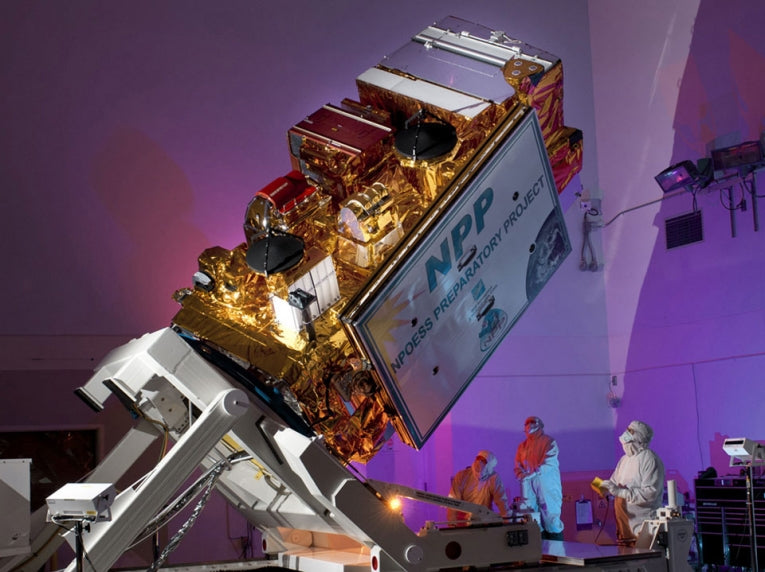NASA's new, polar-orbit, weather satellite, the NPOESS Preparatory Project (NPP) satellite was launched this morning from Vandenberg Air Force Base, at 2:48 a.m. PDT aboard a Delta II rocket. It is primarily going to further the US. NOAA meteorologists' knowledge of local weather, replacing the NOAA-19 satellite. There are four brand-new instruments that NOAA has put on board. The four sensors (shown in bold below) are designed to be able to record:
1. Cloud measurement and radiant energy, using CERES;
2. Vegetation cover, ocean colour and plankton measurement, using VIIRS
3. Maritime temperature and terrestrial temperature, using CrIS;
4. Volcanic ash plumes;
5. Wildfire areas;
6. The area of Arctic sea ice; and
7. Ozone maps, using OMPS.
The NPP Project manager, Ken Schwer, said at a press conference, "Now the future of NPP starts and we look forward to NPP touching the rest of the world." Dr. Jane Lubchenco, under-secretary of commerce for oceans and atmosphere and NOAA administrator made the comment, "The need for improved data from NPP and the next generation satellite system under development by NASA and NOAA has never been greater. They will enhance our ability to alert the public with as much lead time as possible." Meteorologists are also keen to point out that a new generation of satellites, based on NPP, with this new generation of instruments are planned to take over from current equipment in the future. In addition, NASA will be furnished with a new research area.

Here is a later picture of the successful NPOESS Preparatory Project (NPP) satellite launch on 28th October; Credit: NASA/Bill Ingalls
In the next few weeks, we will be seeing revolutionary data from the new instruments and be able particularly to improve three day weather forecasts and global warming data. The pictures will be shown on The Earth Times as soon as we have them.










